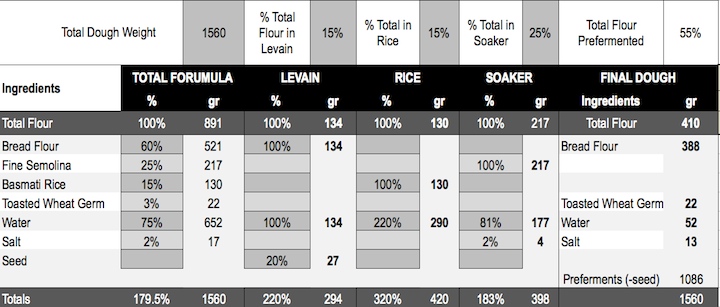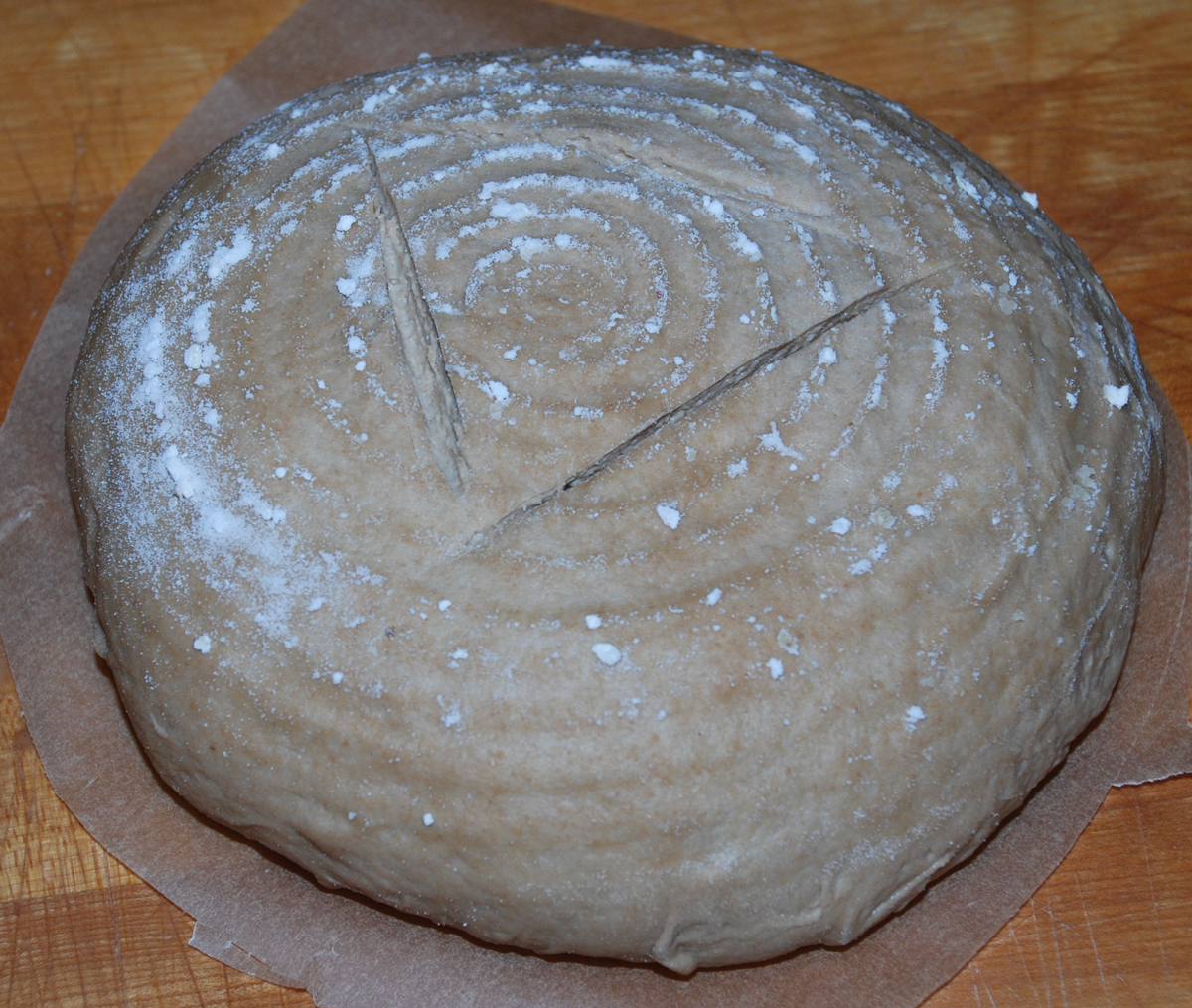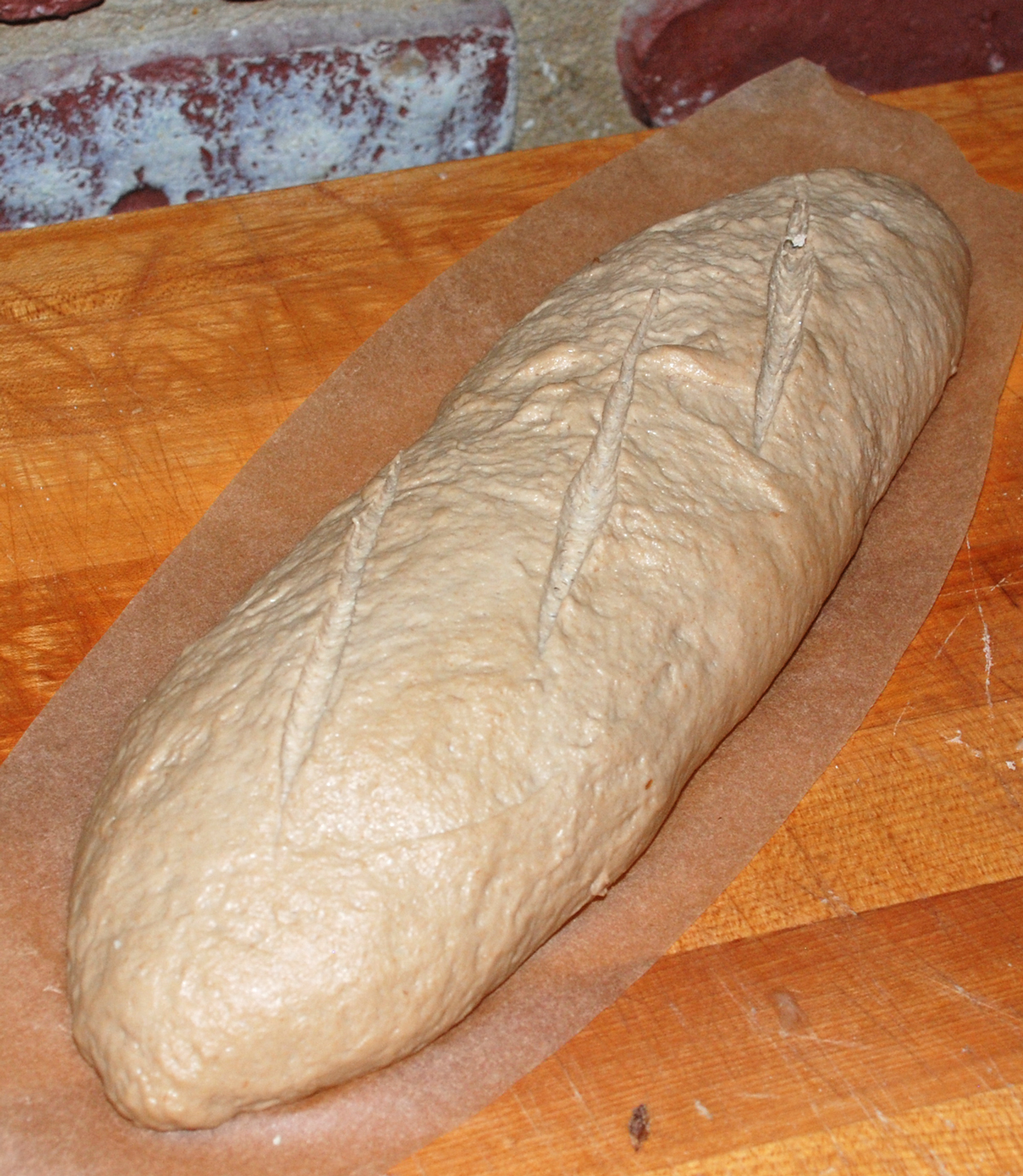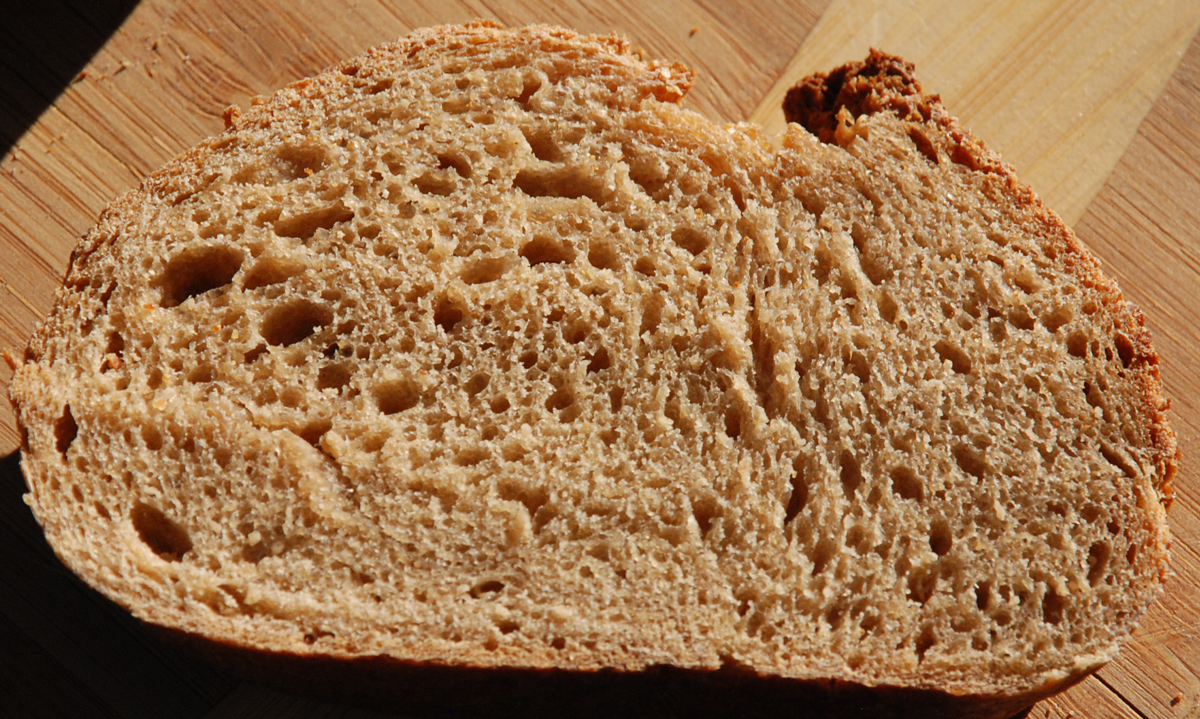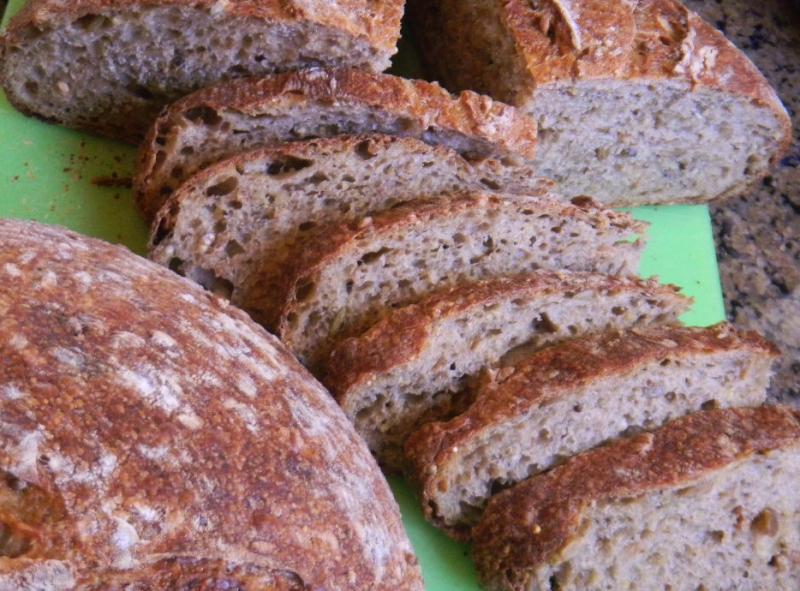
My wife ran out of her Oroweat Whole Wheat bread yesterday so she asked for two pieces of bread for her bag lunch. So I found some frozen Duram Atta SD for her we baked Mastaba Style here:
http://www.thefreshloaf.com/node/29145/sourdough-duram-atta-bread-%E2%80%93-pharaoh%E2%80%99s-mastaba-style


She said she really liked it when she got home and asked for the same thing for her lunch sammy the next day. Sadly, that was the last of it and the last of any white or nearly white SD breads on hand in the freezer. So she had to settle for 67% Rye Whole Wheat SD with seeds and sprouts we called Twisted Sisters Chacon that we baked here
http://www.thefreshloaf.com/node/29172/twisted-sisters-chacon-67-whole-rye-wheat-sprouts-seeds


We also wanted to make a near white bread with seeds and soaker on the lines of our last bake - Ian’s Mocha Disaster Chacon. Instead of using mocha coffee for the liquid we wanted to use a just as deep adn dark chicken stock since we were making that at the same time anyway. Our stock is made from roasted bones and clinging meat, no skin and saved suitable veggie ends and pieces of all kinds that are frozen for this purpose. It is totally de-fatted and unsalted.


After posting on the forum and checking the TFL search, only a few folks have used chicken stock for the liquid in bread with Glenn Snyder and Shaio-Ping among them. HeidiH did too but considers it one of her failures due to its poor and unusual after taste they did not like. We wanted to lighten the load a little to reflect the whiter flours used, so only 30% whole grains this time and by reducing the seeds and soaker by 2/3rds to a measly 45%.
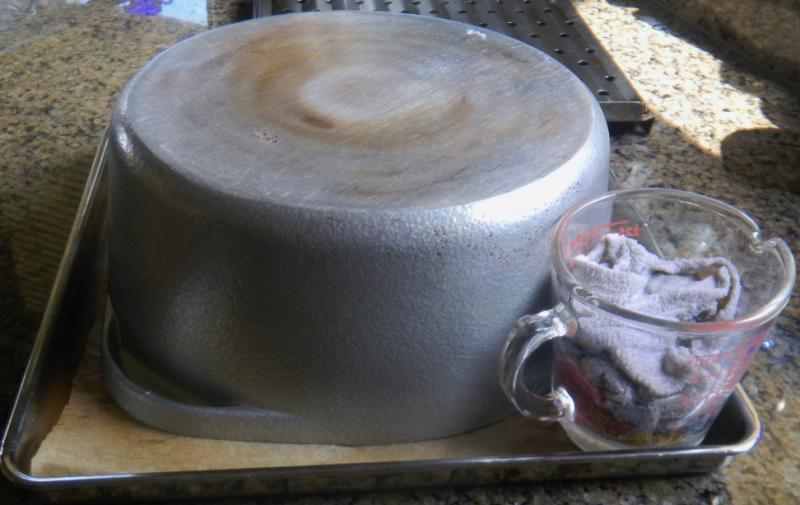

The flours picked for this loaf were; dark rye, spelt, WW, quinoa, steel cut oats and flax seeds all ground at hole in the little Krups coffee mill and AP. No potatoes this time because we forgot to add the flakes. The soaker consisted of; rye, red winter wheat and spelt berries with cracked barley and bulgar. The seeds included; sunflower, pumpkin, chia, hemp and millet.


We also wanted to bake this in the mini oven (MO) and use our new heavy aluminum Goodwill 4 ½ qt DO’s as a cloche. We made the largest boule which experience to date says will still fit in the MO. It doubled in volume while chilling out in the fridge for 12 hours.

Finally the sun came out after 4 days of rain - half a year's worth at my house.
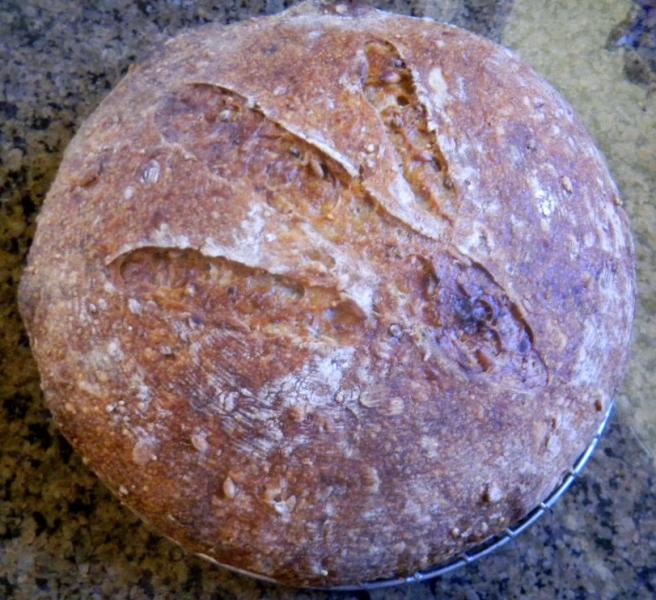
Ian's T-Rex claw poorly slashed this time.

The bread slashed nicely, T-Rex style. The crust baked up deep brown, blistered and crunchy with the thick crust going soft and chewy as it cooled. We didn’t expect the crumb to be wildly open due to the 30% whole grains and 45% soaker and seeds but we were happy with the fairly open crumb that was very moist as usual - the YW trademark.

Thanks to Hanseata, my favorite hemp seed roae to the top. Blisters, blisters adn more blisters thanks to MO and the DO.

It sliced well, tasted nutty, meaty and healthy with the quite a bit of seeds and soaker. These add in’s really made the chew of this bread exceptional – its hallmark. Hope the wife likes this for her work day sandwiches or we will have to bake up one of our white SD favorites, David Snyder’s Pulgiesi Capriosso or San Joaquin. But we will have to see how she handles the subtle chicken stock taste which I found perfectly OK - probably because there was no fat or salt in the stock.



This bread is more moist and soft than any we have baked before. The chicken stock comes through in good way and the blistered, chewy MO crust is back! This is another bread unlike any other. Just delicious, any way you want it or need it.

Breakfast of this fine bread with dragon fruit and prickly pear cactus tuna, sausage, egg, colby jack cheese and home made English muffin. The lunch also features this bread with 1/2 ea. peach, mango and plum, cantaloupe chunks, black grapes, cherries, lettuce with feta cheese, brie cheese slices, carrot sticks and a strawberry. The sandwich bread is spread with home made dijon mustard, then lettuce, tomato, grilled chicken slices, colby jack and brie cheese are piled on.

Method
We used a combo YW and SD starter with 10 g SD seeds taken from the rye sour, desem and multi-grain starters. We used AP flour for each of the (2) 3 hour and (1) 2 hour levain builds and we built the YW and SD communally, instead of separately, this time.
The soaker was made and set aside for 6 hours by covering the grains with water and microwaving them until the water boiled. The flours, honey, malts, VWG and salt were autolysed with the chicken stock for 2 ½ hours. We no longer leave the salt out of the autolyse.
With autolyse complete we mixed it with the levain and kneaded it with the dough hook for 8 minutes on KA 2 until the dough pulled away from the sides of the bowl. The dough was allowed to rest for 20 minutes covered with plastic.
After resting the first of (3) S & F’s was performed 15 minutes apart on a well oiled surface. On the 2nd S & F the soaker was drained and dried with a paper towel and incorporated into the dough. A little bench four was required to get the dough back in shape. The dough was rested in an oiled, plastic covered bowl. On the 3rd S & F the seeds were incorporated.
The dough was then allowed to develop and ferment for 90 minutes before being pre-shaped and then shaped into a boule stretching the skin tight as we piulled ot across the un-floured surface. The dough ball was placed seam side up in our favorite, larger sized, rice floured basket. The basket was placed into a tall kitchen trash can liner and retarded in the fridge for 12 hours.
The MO was preheated to 500 F and (1) of Sylvia’s steaming towels in a half water filled Pyrex measuring cup was heated to boiling in the microwave. We decided to bake the bread on parchment on the unheated, solid, lower portion of the MO’s broiling pan and cover it with the unheated aluminum DO bottom.
The dough was removed from the fridge and tipped out onto a parchment covered peel, slashed in Ian’s T-Rex Style and slid onto the broiler pan bottom leaving room to cover it with the DO bottom while still leaving room for Sylvia’s steam in the back corner.
The whole cold apparatus, with cold contents, was placed into the MO and a half cup of water was tossed into the bottom of the MO when the door was closed. When the MO beeped that is was back up to 500 F, about 5 minutes, the temperature was turned down to 450 F and the bread was allowed to steam covered for 20 minutes. When the steam was removed, the bread uncovered and the temperature turned down to 425 F, convection this time. The bread was moved to the vented top of the broiler pan.
The bread was rotated 180 degrees every 5 minutes until it reached 205 F on the inside – About 15 minutes and 40 minutes total. The MO was turned off but the boule was left inside it with the door ajar for 10 minutes to further crisp the crust. It was then moved to a cooling rack for 1 hour until cool.
The formula follows the pix’s as usual.
| Multi-Grain Sourdough & Yeast Water Combo with Chicken Stock, Soaker & Seeds | | | | | |
| | | | | | |
| Mixed Starter | Build 1 | Build 2 | Build 3 | Total | % |
| Multi-grain SD Starter ** | 30 | 0 | 0 | 30 | 5.57% |
| Yeast Water | 50 | 0 | 0 | 50 | 13.74% |
| AP | 90 | 40 | 30 | 160 | 43.96% |
| Water | 40 | 40 | 30 | 110 | 30.22% |
| Total Starter | 210 | 80 | 60 | 350 | 96.15% |
| ** 10 g each Rye Sour, Desem and Multi-Grain Starter | | |
| | | | | | |
| Starter | | | | | |
| Hydration | 100.00% | | | | |
| Levain % of Total | 31.06% | | | | |
| | | | | | |
| Dough Flour | | % | | | |
| Non - Diastatic Malt | 2 | 0.55% | | | |
| Wheat Germ | 10 | 2.75% | | | |
| WW | 25 | 6.87% | | | |
| Steel Cut Oats | 10 | 2.75% | | | |
| Whole Quinoa | 10 | 2.75% | | | |
| Spelt | 25 | 6.87% | | | |
| Ground Flax Seed | 5 | 1.37% | | | |
| AP | 250 | 68.68% | | | |
| Diastatic Malt | 2 | 0.55% | | | |
| Dark Rye | 25 | 6.87% | | | |
| Dough Flour | 364 | 100.00% | | | |
| | | | | | |
| Salt | 7 | 1.92% | | | |
| Chicken Stock | 225 | 61.81% | | | |
| Dough Hydration | 61.81% | | | | |
| | | | | | |
| Total Flour | 539 | | | | |
| Chicken Stock & Water | 400 | | | | |
| T. Dough Hydration | 74.21% | | | | |
| Whole Grain % | 31.35% | | | | |
| | | | | | |
| Hydration w/ Adds | 74.31% | | | | |
| Total Weight | 1,127 | | | | |
| | | | | | |
| Seeds & Adders | | % | | | |
| VW Gluten | 6 | 1.65% | | | |
| Honey | 10 | 2.75% | | | |
| Pumpkin, Sunflower - 20 ea | 40 | 10.99% | | | |
| Millet, Chia, Hemp Seeds - 15 ea | 45 | 12.36% | | | |
| Total | 101 | 27.75% | | | |
| | | | | | |
| Soaker | | % | | | |
| WW | 20 | 5.49% | | | |
| Rye | 20 | 5.49% | | | |
| Cracked Bulgar | 10 | 2.75% | | | |
| Cracked Barley | 10 | 2.75% | | | |
| Spelt | 20 | 5.49% | | | |
| Total Soaker | 80 | 21.98% | | | |
| | | | | | |
| Soaker and Seeds Total | 45.33% | | | | |

















